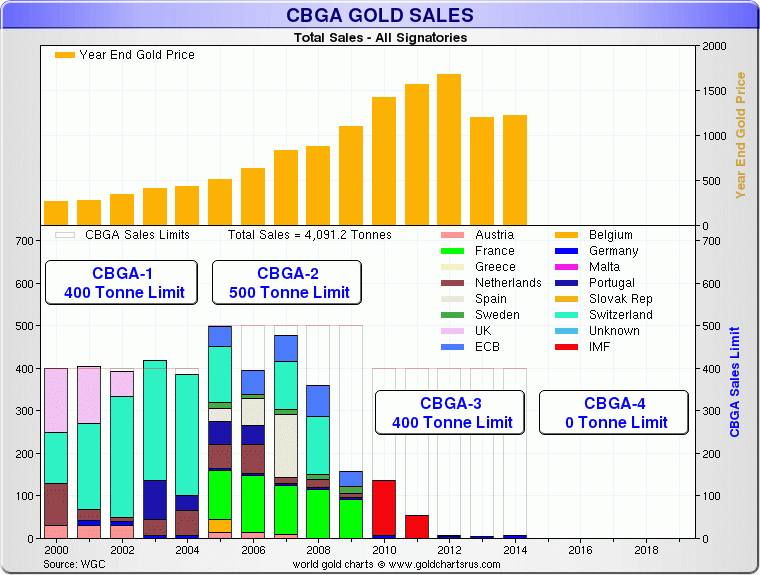9.4
7.585 Reviews

English
EN
The Central Bank Gold Agreement, also known as the Washington Agreement, is an agreement between several central banks that was signed on September 26, 1999. The Gold price was almost at its lowest point at the time and central banks wanted to prevent uncoordinated gold sales by central banks from distorting the gold market too much. At the same time, the participating central banks wanted to reduce the sale of gold stocks and end gold lending, a practice that became increasingly popular after the breakup of the London Gold Pool.
It was mainly European central banks that signed this agreement. They agreed on a number of things:
This agreement was revised in 2004, 2009 and 2014. Remarkably, the U.S. central bank never signed this agreement. They prefer to see the dollar as their monetary reserve.

Gold sales under the Central Bank Gold Agreement